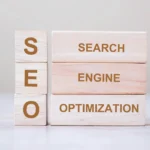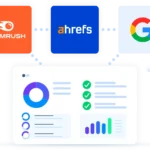The power of online advertising and paid search, in particular, is outstanding. But you’re missing out if you don’t include Microsoft advertising as part of your digital marketing strategy.
And why is that? You can’t miss out on the demographics and people you can target on Microsoft.
The terminology and product names can be a little confusing when it comes to PPC advertising through Microsoft. Microsoft Bing is an online search engine that is similar to Google. Its search results are used to power Amazon’s Alexa virtual assistant, which is owned and operated by Microsoft.
Microsoft Advertising, formerly known as Bing Ads, is a service that enables online advertising, including pay-per-click (PPC), across Microsoft Bing and other search engines.
What is Microsoft Advertising?
Formerly known as Bing Ads, Microsoft Advertising isn’t just Bing anymore. Now, Microsoft Advertising powers Bing, Yahoo, and AOL, three separate search networks. So, you get access to a range of different audiences when you advertise with Microsoft. And let’s not forget that audiences who come to you through search, as opposed to social media or display ads, already have a strong intent to buy, which means higher CTRs (click-through rates).
Paid search is one of the most common forms of online advertising. Many marketers are curious about which one they should use for their campaigns: Microsoft or Google Ads. The fact is, however, that the two have many differences and offer contrasting benefits. That’s why it’s best to use both platforms.
How does Microsoft advertising differ from Google Ads?
Firstly, the purpose of Microsoft Advertising and Google Ads is the same. Both are online advertising tools designed to help businesses reach specific audiences, drive traffic, and increase revenue. However, there are different features and benefits associated with Google and Bing advertising that could make using a combination of the two beneficial to your campaigns.
Google has two advertising networks: the Search Network, where ads appear in the SERPs, and the Display Network, where advertisers create display ads to appear on various websites across the web.
Microsoft Advertising has links to three search engines—Bing, Yahoo, and AOL—so if you advertise on one platform, your ad will be visible on all three. This means that your campaigns will be visible to searchers across all Bing, Yahoo, and AOL properties, as well as various partner sites.
However, there are other differences between the two. These include:
Differences between Microsoft Advertising and Google Ads
- Keywords: A keyword research tool, broad match, and negative keyword targeting are available in both Google Ads and Microsoft Advertising. The main difference between the two platforms is that Microsoft Advertising has much lower keyword traffic.
- Click-through rate: A good CTR depends entirely on the industry average, as mentioned in our CTR guide. However, it’s been reported that Microsoft ads tend to have higher CTRs for shopping and financial services search verticals, as both Yahoo and MSN offer financial reporting. That’s because they offer a variety of shopping and financial resources, so ads in these search verticals on these platforms tend to reach highly interested prospects, generating more engagement and higher CTR.
- Reach: Yes, it’s no secret that Google Ads has the biggest market share, but Microsoft Advertising is growing fast. The platform states that with Microsoft Audience Network, you can reach almost 140 million total unique visitors across MSN and Outlook.com. So it’s quite a missed opportunity if you’re not using Microsoft Bing!
- Potential ROI: When we talk about ROI, we mean the return on your investment in Google Ads as an advertising platform. According to Google, it is “conservatively estimated” that for every $1 that a business spends on Google Ads, it receives $8 in return through Google Search and Google Ads. That’s an 800% ROI. Just by using Google Ads.
- Competition: When it comes to keyword bidding, Google Ads tends to be more competitive. This makes Microsoft advertising an attractive alternative. Campaigns on Microsoft Advertising face approximately 36% less competition than Google Ads, according to TheeDigital (2019).
- Demographics: Some of the key demographics of the two platforms differ. Microsoft’s audience tends to be older than that of Google Ads.
- Granular targeting: Microsoft Advertising lets you adjust settings like network, location, language, and ad rotation at the ad group level, not the campaign level like Google Ads.
How can I benefit from using Microsoft Advertising?
There are several advantages to using Microsoft Advertising. Some of these may make it a better platform than Google Ads.
Reaching the Right Audience with Microsoft Advertising
- People over the age of 35 make up almost three-quarters of Microsoft Advertising users. This is the search network where you’re most likely to reach an older audience.
- Half earn $75,000 or more. A household income of over $100,000 makes up almost a third of the audience. So for brands in the luxury sector, Microsoft Bing is the ideal place to be.
- As well as being more affluent, users spend an average of 22 percent more on Microsoft Bing than on any other search engine.
- In general, there is less competition for your keywords with Microsoft Advertising. This helps to lower your Google Ads CPC (cost per click), which means that you’re paying less to target a demographic with a higher disposable income.
- The CPC is between 32.5 percent and 59.2 percent cheaper than Google Ads.
Higher Engagement and Conversion Rates
- Bing users who click ads are more engaged with the websites and landing pages they’re sent to. They also convert at much higher rates. In the automotive industry, users convert at rates between 10% and 56% higher than with Google Ads, according to a 2020 study by Search Engine People.
- You have more control over what you want to advertise, what information you want to include, and which demographics you want to target.
- When it comes to device targeting, Microsoft Ads has an advantage over Google Ads. Bing allows a business to target a consumer based on the specific device they’re using and the operating system installed on it. In a similar vein, Microsoft Ads specifically targets mobile users and gives advertisers the ability to ignore desktop viewers altogether.
Success Stories and Remarketing Benefits
- In a case study from Microsoft, remarketing was recommended for a campaign on behalf of Lending Stream, a short-term loan company. The idea was to retarget previously engaged users and get them to return and convert. The result was an 80% increase in the conversion rate and a 77% reduction in the cost per acquisition (CPA).
- You’ll access Bing, Yahoo, and AOL audiences.
- The platform allows you to import your existing Google Ads campaigns directly into Microsoft Advertising after creating a Microsoft Bing account. Just a few clicks and your campaign is up and running. No need to start from scratch.
Ease of Use and AI-Powered Targeting
- AI-powered audience targeting and customer intent are the cornerstones of Microsoft Advertising. Unlike other platforms, the Microsoft Audience Network collects data from Microsoft-owned sources such as Outlook, Skype, and LinkedIn users. This makes targeting more intelligent. By targeting the 63 million search users that Google can’t reach, this network also promises to cast a wider net.
As Microsoft itself puts it, With one ad buy through Microsoft Advertising, you have access to 18 million unique searchers on the Microsoft Search Network, representing 441 million monthly desktop searches. That represents 21.3% of the UK search market.
Managing your Microsoft Advertising Campaign: How to do this
It’s all very well to set up and run a well-designed PPC campaign using Microsoft Bing Ads, but if you don’t manage it properly and continually improve and respond to your campaign results, you won’t be able to guarantee its success.
When we say PPC, we mean pay-per-click ads that link to your brand’s or service’s website or products. Please read our PPC guide to understand the different types of advertising and how they work before diving into Microsoft Advertising.
One question you might ask when considering how to run a campaign on Microsoft Advertising is whether you need an agency or tool to help manage it. There’s no right or wrong answer. It all depends on what your business is and what you want to get out of Microsoft Advertising.
With a PPC agency, someone will be in charge of your entire campaign on your behalf. This means you don’t have to spend hours learning how to manage your campaigns. You leave it to the experts to take care of everything.
However, a PPC management tool may be a better option if you don’t want to give up control of your accounts. This prevents you from paying agency fees and keeps you in control of your accounts. With the right PPC management company, you can save valuable time managing and optimizing your campaigns on your own but with access to personalized insights and intelligent ways to help you along the way.
What is the cost of advertising on Microsoft Bing?
You’ll need to look at four performance benchmarks, which vary by industry, to determine how cost-effective Microsoft Advertising is:
- Average click-through rate (CTR) on Bing by sector
- Average cost per click (CPC) in Bing by industry
- Average conversion rate (CVR) on Bing by sector
- Average cost per action (CPA) in Bing by sector
Although budgets vary by industry and advertiser, Microsoft Advertising can offer cheaper clicks on Bing. PPC advertisers get more bang for their buck simply because there is less competition for advertisers to bid on. Figures vary, but CPCs range from 32.5% to 60.2% below Google Ads. This is what our research shows.
If you’re working with a smaller PPC budget, you’ll need to be meticulous with your bid management. Microsoft Advertising may well be the solution. Essentially, you will get a better ROI by getting the traffic you need at a lower cost.











6 Responses